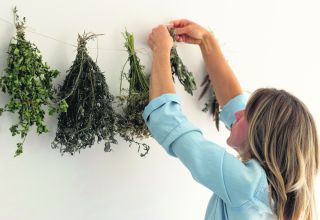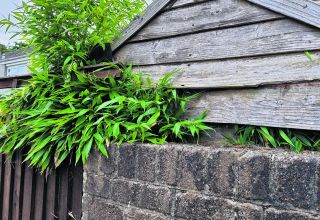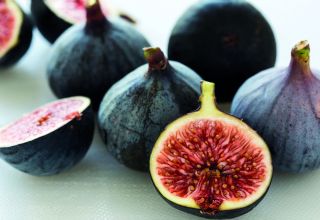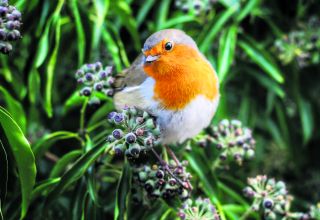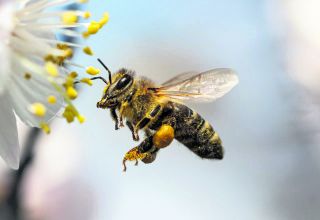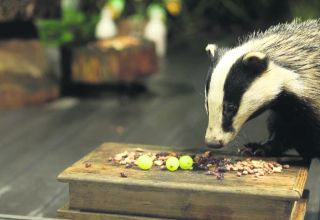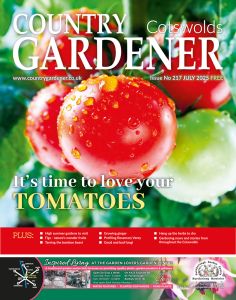Individual gardeners can do much to reverse the decline in insect numbers hit by too much pollution and habitat changes.
The summer of 2019 has been labelled as one of the most important years in decades for the insect life which populate our gardens. Moths, butterflies, ladybirds and bees are all under threat of declining numbers.
The dramatic drop is the result of a multiple whammy of environmental impacts: pollution, habitat changes, overuse of pesticides, and global warming. And it is a decline that could have crucial consequences. Our creepy crawlies lie at the foot of a wildlife food chain that makes them vitally important to the makeup and nature of the countryside.
They are ‘the little things that run the world’ according to Devon biologist Paul Webb, who observed: “If all humankind were to disappear, the world would regenerate back to the rich state of equilibrium that existed 10,000 years ago. If insects were to vanish, the environment would collapse into chaos.”
It is individual gardens which hold the key to putting things right, says Webb.
‘By planting pollinator gardens with the right sort of plants and trees which we know will attract bees and butterflies the whole insect cycle can be boosted. Just think if every garden in the country had this as a task the decline in numbers would soon be reversed’.
The best illustration of the ecological importance of insects is provided by birdlife. Without insects, hundred of species face starvation and some ornithologists believe this lack of food is already causing declines in bird numbers.
Insects also play invaluable roles in other parts of the environment – for example as pollinators of our orchards and fruit fields. And again, scientists are worried. People think that it is just bees that pollinate orchards, but there are huge numbers of flies that also pollinate – and they are all also threatened.
Seventy of the 100 crop species that provide 90 per-cent of food worldwide are pollinated by bees. In the UK, there are more than 250 species of bee: 25 species of bumble bee, 224 species of solitary bee and one honey bee species. According to a number of government reports there has been an overall decline in wild and honey bees over the past 50 years. The figures also revealed evidence that there has been parallel declines in the plants that rely on them for pollination.
The state of the UK’s butterflies– produced by Butterfly Conservation – provided further evidence of “the serious, long-term and ongoing decline of UK butterflies”. Overall, 76 per-cent of the UK’s resident and regular migrant butterfly species had declined in either abundance or occurrence over the past four decades.
Ideas over the next few weeks to welcome in wildlife
Everyone wants to be able to watch the wildlife in their garden in the spring, whether it’s baby birds, hedgehogs or butterflies. However, if you want to enjoy the wildlife in the spring, it’s important to make sure that you get your garden prepared in advance.
Gardeners are certainly in the front line of the battle to preserve nature. These simple steps will help provide food and habitats for a healthy ecosystem in your garden.
- Make a nest for ladybirds and lacewings by tying a bundle of bamboo or cow parsley stems together and placing in the nook of a tree or a crack in a wall. Build a log pile to encourage biodiversity – it’s the ideal habitat for small mammals, amphibians and all manner of insects.
- To attract hedgehogs, make a tepee-shaped logpile. Remember to check for wildlife before lighting a bonfire.
- Leave a pile of fallen leaves undisturbed in a damp, shady corner of the garden – frogs, toads, newts and slug-eating centipedes thrive on decay. Dead wood left on the tree could become a home for bats, birds or invertebrates.
- Plant a native hedgerow of hawthorn (Crataegus monogyna), blackthorn (Prunus spinosa), field maple (Acer campestre) or hazel (Corylus avellana) to replace an exotic hedge or a wooden fence. The hedge will provide nesting sites and berries, nuts and hips that will be invaluable winter food for hungry wildlife.
- In a small garden, plant a Malus ‘Red Jade’ with a height of two metres (6½ft) and similar spread. Its crab apples are a great food source for wildlife.
- Encourage bees by planting pollen- and nectar-rich plants such as hardy salvia, redbeckia, lavender and nepeta. One way to help is to provide a dry nesting box.
Dorset centre launches new courses and workshops
Dorset Wildlife Trust’s Kingcombe Centre in west Dorset has launched its new programme of courses and workshops. The programme has 54 courses covering a wide range of subjects, from conservation to chocolate making.
New courses include ‘How to be a successful smallholder’, and ‘Meadow Drift’, which is the first textile course run at the centre, celebrating the meadows through the medium of textile. Other courses which have returned, include ‘An Introduction to Beekeeping’, ‘Macro Photography’ workshops, ‘Lino Printmaking’ and ‘Early Summer Plants in Watercolour’.
The Kingcombe Centre is nestled in a 450-acre nature reserve owned and managed by Dorset Wildlife Trust for over 30 years. The Kingcombe Meadows Nature Reserve offers inspiration and beauty in its wildflower meadows, green lanes and hedgerow habitat.
The Kingcombe Centre is in Lower Kingcombe, Dorchester, Dorset, DT2 0EQ, between Maiden Newton and Bridport. www.kingcombe.org
Welcome the frogs into your garden
Frogs are under threat worldwide, from habitat loss, pollution, introduced species and, alarmingly, a new parasitic fungus known as amphibian chytrid.
If you want to play your part and ensure their survival in your garden, there are several things you can do.
“Creating ponds is the best thing that anyone can do”, says Tim Halliday, professor of biology and international director of the declining amphibian populations taskforce.
He recommends building a pond in your garden, as close as you can to an existing population.
Creating a frog pond isn’t as difficult as it sounds, and can add to a garden’s aesthetic appeal. A pond should be at least 60cm deep, in a shaded area, with pond liner with a few shallow edges for the tadpoles, and no fish.
However, it is important to let frogs arrive at your garden pond on their own. If there are frogs within 1000metres, and the pond is suitable, they will come unsolicited.
Froglife, a national wildlife charity concerned with the protection of Britain’s amphibians and reptiles, has some pointers on making the garden around your pond frog-friendly.
Wild areas of the garden, as well as ‘leaf piles, rocks, logs and garden debris,’ provide areas in which frogs can forage and hide, they say.
Because all amphibians breathe partially (and in some cases, completely) through their skin, they are particularly sensitive to toxic chemicals in the environment. Therefore, you should avoid using chemicals if you hope to have frogs in the garden. www.froglife.org
Top tips when planting for wildlife:
1. Choose single-flowered varieties of plants. Bees and butterflies can’t access double flowers for pollen and nectar.
2. Leave some of your culinary herbs to flower – they are a rich food source for bees and butterflies and will leave your garden buzzing on warm days!
3. Don’t be too diligent with your spring clear up. The dead remains of plants provide valuable shelter for over-wintering insects.
4. Try not to spray your plants with insecticides as these will kill beneficial insects too. Be patient and the pests will often be eaten naturally by ladybirds, lacewings, spiders, small mammals and birds.

